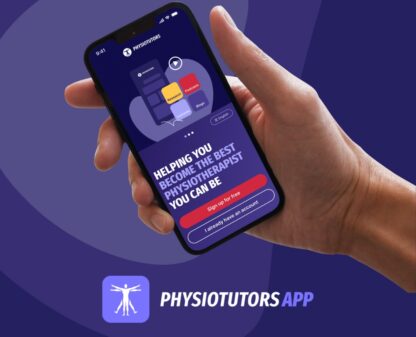Frozen Shoulder

Introduction
- Poorly understood condition causing substantial pain and movement restriction.
- Can be differentiated into primary (idiopathic) and secondary onset.
- Secondary FS can be intrinsic, extrinsic, or systemic.
- Inflammation and capsular fibrosis are likely due to metabolic syndrome and chronic low-grade inflammation.
- The disease process progresses from inflammation to capsular fibrosis
Epidemiology
- Primary FS affects 2 to 5.3% of the general population.
- Secondary FS prevalence increases with diabetes mellitus and thyroid disease.
- Most cases occur between ages 40 and 65, slightly higher prevalence in women.
- Contralateral occurrence within five years was reported in 17% of cases.
- Non-dominant side may be affected more often.
Clinical Picture
- Shoulder pain radiating into the upper arm, severe and diffuse.
- Onset is sudden or gradual with progressive pain and stiffness.
- Pain is described as constant, severe, and exacerbated by movement.
Examination
- Equal loss of active and passive range of motion. External rotation loss of at least 50% of 30° and 25% loss in at least 2 other planes compared to the other side
- Medical history includes diabetes, cardiovascular disease, smoking, and high cholesterol.
- Active muscle guarding may contribute to loss of range of motion. Test Pseudo-Frozen Shoulder with the Coracoid Pain Test
Treatment
- Tailored physiotherapeutic treatment based on reactivity degree.
- Steroid injections are effective for pain, function, and self-reported success in the early stages.
- Hydro-distension injections provide short-term benefits in pain and range of motion.
- Manipulation under anesthesia and arthroscopic capsular release are last-resort options with limited evidence and potential complications.
References
Birch, R., Jessop, J., & Scott, G. (1991). Brachial plexus palsy after manipulation of the shoulder. The Journal of Bone and Joint Surgery. British volume, 73(1), 172-172.
Buchbinder, R., Green, S., Youd, J. M., Johnston, R. V., & Cumpston, M. (2008). Arthrographic distension for adhesive capsulitis (frozen shoulder). Cochrane Database of Systematic Reviews, (1).
Carbone, S., Gumina, S., Vestri, A. R., & Postacchini, R. (2010). Coracoid pain test: a new clinical sign of shoulder adhesive capsulitis. International orthopaedics, 34, 385-388.
Grant, J. A., Schroeder, N., Miller, B. S., & Carpenter, J. E. (2013). Comparison of manipulation and arthroscopic capsular release for adhesive capsulitis: a systematic review. Journal of Shoulder and Elbow Surgery, 22(8), 1135-1145.
Hollmann, L., Halaki, M., Haber, M., Herbert, R., Dalton, S., & Ginn, K. (2015). Determining the contribution of active stiffness to reduced range of motion in frozen shoulder. Physiotherapy, 101, e585.
Kelley, M. J., Shaffer, M. A., Kuhn, J. E., Michener, L. A., Seitz, A. L., Uhl, T. L., … & Wilk, K. (2013). Shoulder pain and mobility deficits: adhesive capsulitis: clinical practice guidelines linked to the international classification of functioning, disability, and health from the Orthopaedic Section of the American Physical Therapy Association. Journal of orthopaedic & sports physical therapy, 43(5), A1-A31.
Lee, S. Y., Park, J., & Song, S. W. (2012). Correlation of MR arthrographic findings and range of shoulder motions in patients with frozen shoulder. American Journal of Roentgenology, 198(1), 173-179.
Lewis, J. (2015). Frozen shoulder contracture syndrome–Aetiology, diagnosis and management. Manual therapy, 20(1), 2-9.
Page, M. J., Green, S., Kramer, S., Johnston, R. V., McBain, B., Chau, M., & Buchbinder, R. (2014). Manual therapy and exercise for adhesive capsulitis (frozen shoulder). Cochrane Database of Systematic Reviews, (8).
Pietrzak, M. (2016). Adhesive capsulitis: an age related symptom of metabolic syndrome and chronic low-grade inflammation?. Medical Hypotheses, 88, 12-17.
Ryan, V., Brown, H., Minns Lowe, C. J., & Lewis, J. S. (2016). The pathophysiology associated with primary (idiopathic) frozen shoulder: A systematic review. BMC musculoskeletal disorders, 17, 1-21.
Tasto, J. P., & Elias, D. W. (2007). Adhesive capsulitis. Sports medicine and arthroscopy review, 15(4), 216-221.
Vermeulen E, Schuitemaker R, Hekman K, van der Burg D, Struyf F. Fysiotherapie bij Frozen Shoulder: aanbevelingen vanuit SchouderNetwerken Nederland. FysioPraxis: vakinformatie voor de fysiotherapeut in de praktijk.-Houten, 1992, currens. 2017;26(7):13-7.
Xiao, R. C., Walley, K. C., DeAngelis, J. P., & Ramappa, A. J. (2017). Corticosteroid injections for adhesive capsulitis: a review. Clinical Journal of Sport Medicine, 27(3), 308-320.


